Soil or hay fertilizer. How to grow vegetables on straw
Straw along with other plant residues is one of the main sources of soil replenishment with organic matter. The organic content of one ton of straw is equivalent to 3.5 - 4 tons of manure!
What is the value of straw? What are its properties? How can straw quickly increase soil fertility? How to use straw properly in natural agriculture? Its role and application in natural farming!
Today we analyze all these and other issues related to straw! Do not miss - all the fun, what you need to learn about straw! ...

For many regions of Russia, this phenomenon is considered normal. You can often see such a picture when straw rolls or field mowers are burned! And this is a disaster!
By this catastrophic damage is done to both the soil and its inhabitants! Burning instantly, the straw creates a temperature on the soil surface up to 360 0 C, and at a depth of 5-8 cm, this temperature reaches 50-70 0 WITH!
Humus, which has been accumulating for decades, disappears with such field fires in a flash!Studies have shown that leached chernozem Humus burnout occurs at a depth of 5 cm and burns it 1.2 tons per 1 ha!
And the loss of water in the soil when burning straw occurs to a depth of 10 cm, and its water-chemical composition naturally deteriorates and its biological activity decreases!
So why are hundreds of tons of straw burned in the fields every year? ... What do farmers think? ...
Why have I started this conversation? For me it is a huge problem to get straw! Well, all the state farms shut up and all the collective farms broke up ... Well, neither wheat nor rye is grown here ... Fields have not been sown for 10 years, or even more ... And nowhere to take straw ... And you have to order from afar, for huge money!
But once driving through our regional environs, I saw a field, and there were bales of straw on it! This is in principle not very far from us, and I gladly went to look for who owns this field! I had to search not so long ..., I know how to talk to people ... but the day was a day off ... There was no manual in place ...
Had her husband had to take time off in the middle of the week to go back to the straw-rich places And what do you think I see literally 4 days later? All straw burned !!! .... I was shocked just ... My indignation knew no bounds! And yet I got to the people I needed! And managed to negotiate the supply of straw in the future!
In general, things are such that the extra unused straw is forced to burn ... Is not it easier to distribute it to the people! I think it would hardly seem like someone to someone who works on the ground ?! BUT? Would you refuse?
Therefore, if you know where it is burned in your neighborhood - go and take it! They do not need - WE NEED !!!
Straw in Natural Farming!

Straw every day occupies all significant positions in our gardens. It is widely used by gardeners and this is far from accidental.

Almost every tenth gardener has already tried to grow - and no one responded badly about this method!


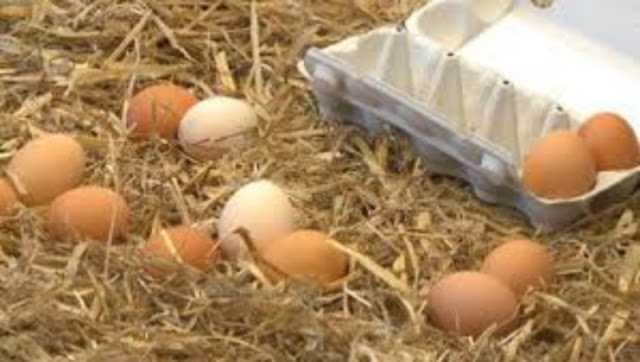
Why is straw so popular for environmental reasons? What are its advantages and what properties of straw so favor to use it? The main role of straw in agriculture, mainly is fertilization of the soil! Because straw plays a big ecological role!
Chopped straw is used more efficiently. The annual use of straw as mulch and subsequently its entry into the soil and decomposition there:
- Increases soil fertility and reduces its compaction!
- The soil becomes more friable,
- Its moisture capacity increases,
- It increases the nutrient content
- The soil is protected from wind and water erosion,
- And in the spring it dries faster, which makes it possible to start garden work earlier!
- Promotes the development of soil fauna - increases the activity of bacteria, earthworms and other organisms!
- Agrochemical and physical properties soil!
But straw is not only effective as mulch! Equally effective is to build from it. straw ridges! And how to do it correctly will be discussed further!
Is it worth making straw beds and what can you grow on them?
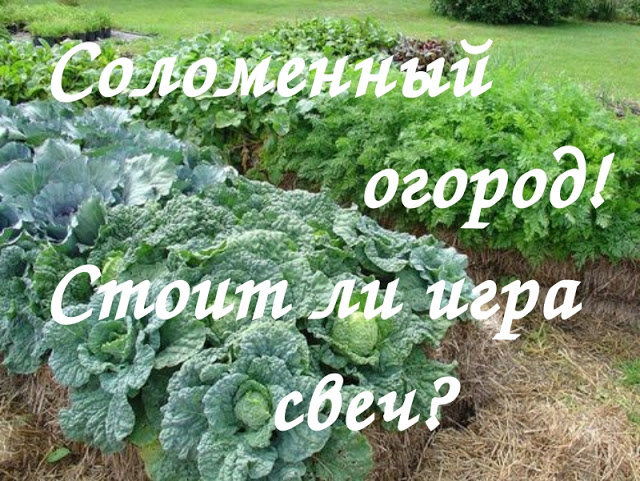
First, let's see if it is worth making straw beds and what can be grown on them?
And straw is no exception, I gradually began to introduce it into my plantings, I conducted a lot of different experiments with her, planted it under her, and on her, and with her, and her too! Well, when I realized that straw is this cool thing, but it’s difficult to get it, we started growing it ourselves, since we have two abandoned around the site, we mow the grass from one, and sow wheat, barley and rye in the second !
for five years, I have tried straw differently and now I can confidently say that you can grow anything on it! Not only is the splendid potato growing under the straw growing, but everything is growing on the straw too!

How do I like straw ridges and to whom I definitely recommend trying them?
I really like straw ridges because you can easily build them on any soil, even on scorched earth! No need to dig, nothing to weed, loosen, spud is not necessary! But for the year of its existence such a bed can make any soil fertile under itself !!!
And now I will tell in order all the stages of the device of a straw ridge!
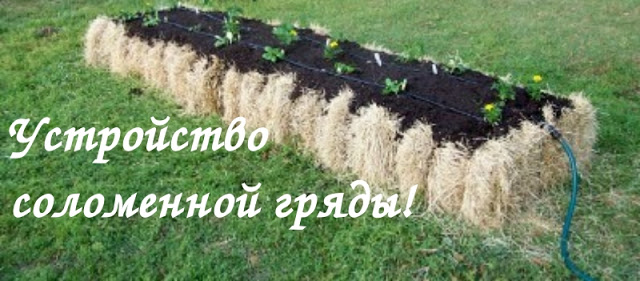
To create a straw ridge will take no more than 10 days! But first you need to purchase straw bales. When buying, inspect them so that there is no mold on them and they should not be flattened, i.e. we need fresh bales - not last year!

Decide on a place, such a ridge can be placed anywhere in the garden, even in the non-cultivated area, at the most problematic! To begin, start with a smaller one, that is, build a small bed of several bales, try it and then you can already plan more.

Here you can give a flight of fancy, creating any geometric shape of the ridge even in height, even in shape! In any case, the bed will be high, which can be useful for people with back problems! Do not have to bend down, all landing almost at the belt level - very convenient!
Many gardeners are afraid to use straw for one simple reason that rodents can live in it! I will tell you directly - rodents may be present in the presence of straw and in its absence. These are such animals, which all is not how much, but you can insure.
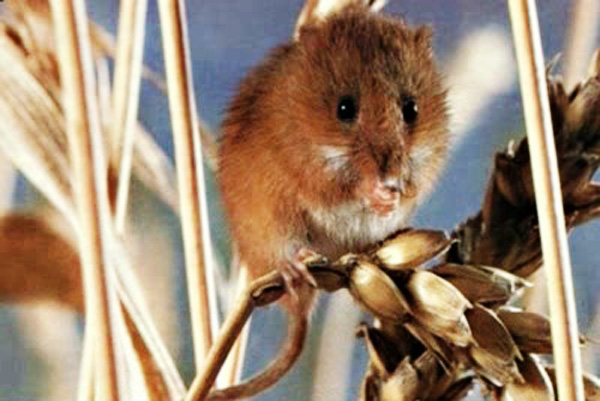
Mice do not like ash wood, when licking paws - ash enters the stomach of rodents and annoys him. Therefore, they avoid ash places. Therefore, you can take care of this before laying the ridge. We place newspapers or cardboard into the place chosen and marked under a straw bed, and scatter ash from the quantity of a bucket into 5 square meters of clean wood ash on top of it!
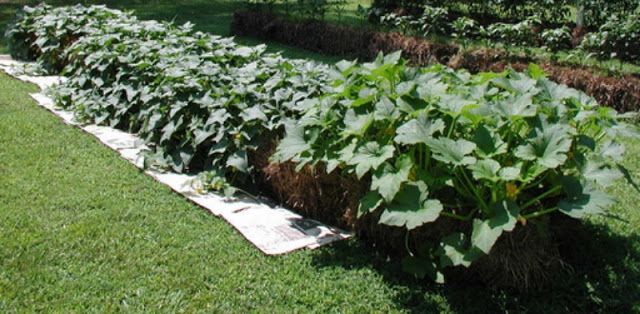
You can hammer a wooden box under such a bed, but you can without it. We lay the bales tightly to each other and wrap them tightly with string. This is to prevent gaps between bales.
Now you need to thoroughly water the garden for three days, you need to saturate the straw with moisture. And within 4-5-6-7 days we pour water with microorganisms! Baikal or any other em-drug will do, or you can pour a good herbal extract in advance! Now, active microbiological processes begin to occur inside the bales and the straw begins to warm up from the inside! The next three days we continue to water a little, you can just water, but you can weak compost tea.
All 10 days the bed is covered with a film, but not tightly, and so that the air can circulate freely, it must be ventilated. During these 10 days, the process of decomposition of straw starts, which will last until the end of the season, but the first 10 days - it is very active, so we start planting something after these 10 days.
Straw bale perfectly accumulates moisture in itself, that's why microorganisms begin to work actively, because the straw breathes freely, providing the oxygen necessary for the activity of microorganisms. Bacteria begin to multiply actively and carbon dioxide is released during their vital activity - the main factor for the development of any plant! This is the uniqueness and effectiveness of the straw ridge!
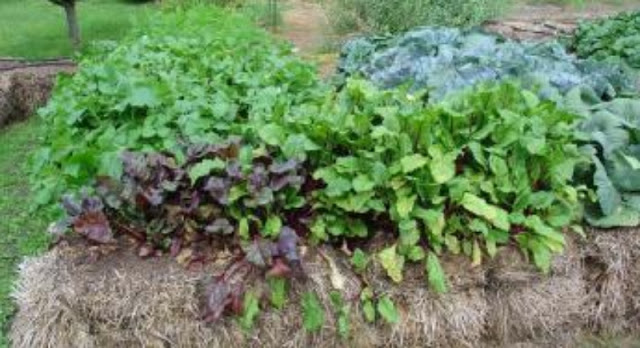
During the time that the bed is being prepared, think about whether you need any support for the plants that you are going to plant here? I recommend to try to start on short and medium-sized plants, such as peppers, tomatoes, not only tall cucumbers, zucchini, pumpkins.
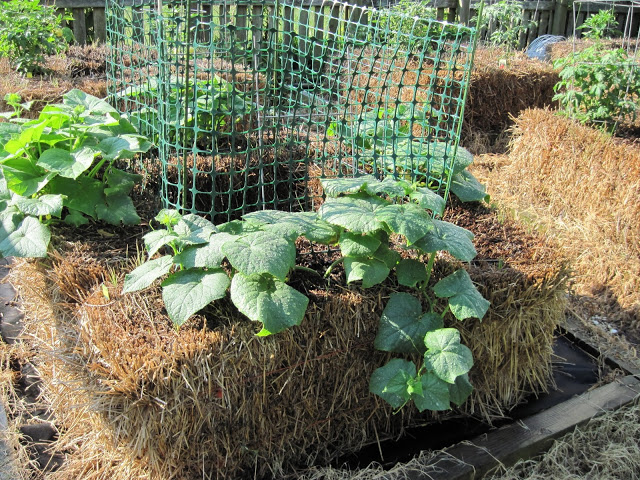
If you plan to plant varieties more than a meter high, then immediately install a trellis or other support. Because the straw becomes loose when decomposed by the end of the summer and it will not be able to hold huge plants, they will fall.
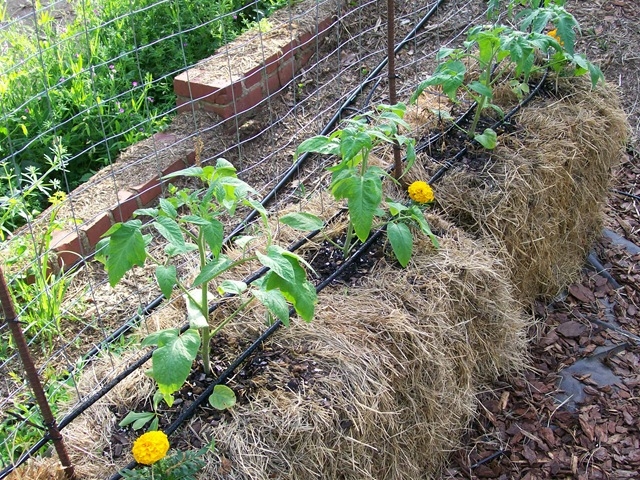
So, you already begin to understand what is the trick here? In the fact that while you are cooking in the plantings the main garden is preparing the beds, sowing the siderats ... This bed is only 10 days old and ready to place any plants on yourself!

Accordingly, the harvest will be sooner! And if you consider that the straw beds can be just as well installed in the greenhouse ....? !! Imagine how much easier your work is compared to, for example, with warm beds!
And if you put a warm bed on the sides with straw bales ?! No ... no ... You first try a tiny straw bed, and then you will not be stopped, you will begin to combine the beds yourself! And this is great! The less work in the garden, the more he becomes !!!
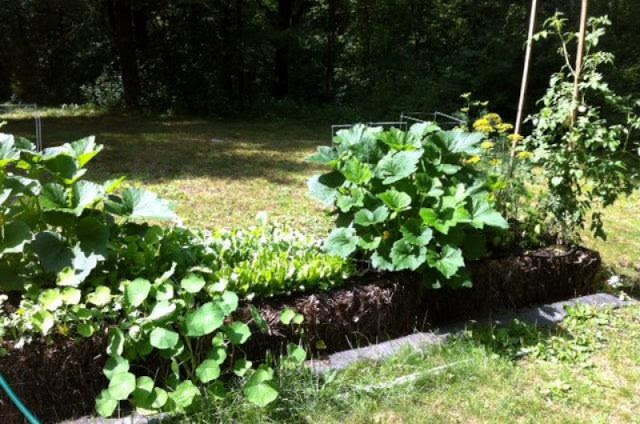
Let us return to our straw bed, it is already ready, the supports have been installed, and now you have two options: you can sow something with seeds on it, or you can land already prepared seedlings!
If you plan on planting seeds, then the surface of the straw ridge must be covered with a thin layer of soil (biohumus or compost).
If the seedlings, then do a scoop of the hole in the straw and plant the seedlings strictly with a clod of earth.
We landed, if there is a threat of return frosts, then they are terrible only on the ground part, because inside the straw the temperature is good, and the plants can be protected in the usual way - we set the arcs and stretch the covering material, also applies to greenhouses. We make it like a greenhouse in a greenhouse!
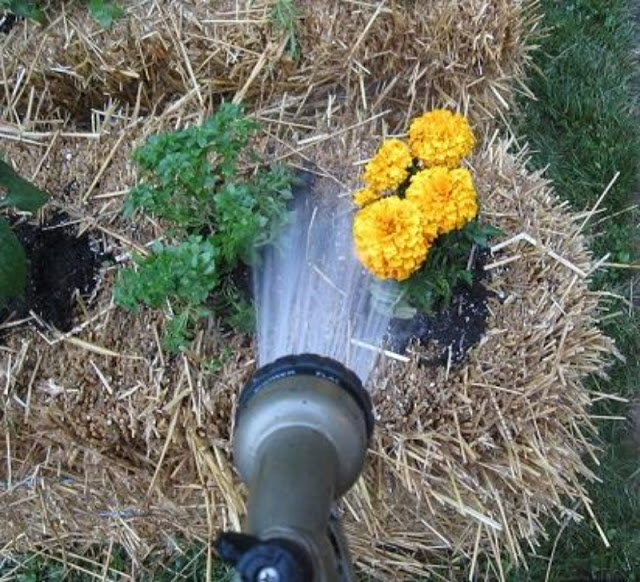
Further, all that is required of you is watering! And with this you can cope once and for all - by installing drip irrigation, you can relax! If this is not possible, then pour watering! But we water on straw, not by foliage! It is very important that the plants do not get sick!
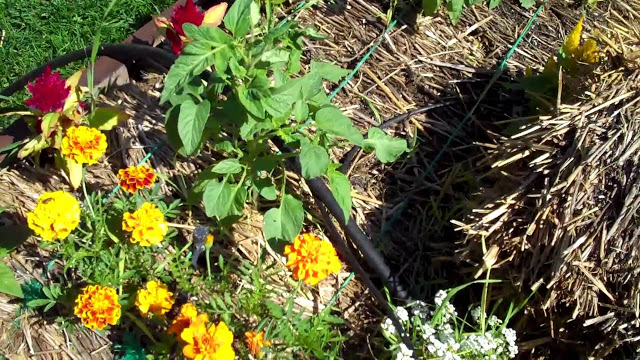
By the way! I forgot to notice that it is necessary to plant HB 101 before planting a straw bed, although it is possible to scatter the granules along the bed surface. As for sores, it is also not scary, then the plant is strong and healthy, do not water the leaves, form on time, use it on a straw bed too! And no illnesses will arise!
The most interesting thing is what to do with this bed in the fall? Oh, nothing, leave it like this to stand until spring - in the spring this spent straw, rotted, will go for mulch, you can, in principle, and take it out in the fall and cover the garden with it. But the main thing is that waste-free production! The straw will long serve your garden, which will be transformed year after year! In just a few years of using straw in this way, you will not recognize your soil - it will become truly healthy and alive! Check it out!
And if you decide to lay out the spent straw in the fall, or removing it from this place you will be pleasantly surprised! Under this straw ridge, you will see the most healthy and vibrant soil teeming that all these months, while the patch worked on your crop, they worked on creating fertile soil! Now at this place you can grow even the most demanding vegetables! By the way, on straw beds you can successfully grow a variety of, whimsical including flowers!

And in conclusion, I want to add ... Do not be afraid of mice! Plant a few chernokorn bushes along the perimeter of the plot and you will not see a trace of rodents. They will bypass your plot side (only with their neighbors agree on solidarity), but the Black Root gives seeds only in the second year. Namely, its seeds are so hateful to rodents, although the smell frightens them away, since we do not feel it!
Live in harmony with Nature and with yourself! Decorate the earth with the paradise of your gardens and orchards, Love Mother Earth, work on it intelligently and consciously! Enjoy every minute you spend on your land!
Experienced gardeners have long been convinced that straw can be an excellent alternative to conventional soil, especially if the site does not have fertile soil. Straw beds are free from weeds and do not require special care.
An unexpected move to a new place of residence sometimes breaks all plans. And even if a city dweller dreams only of a quiet and secluded place and a small vegetable garden - this is not always destined to come true. Something similar happened with our hero, who was forced to move out of town and dreamed of breaking the beds "for himself", and when he arrived, instead of soil he found a mixture of construction debris, concrete chips, a small amount of sand and dirt instead of soil. But he did not give up and decided to make a garden of "nothing".
The idea of a vegetable garden of straw
The first thought of the unfortunate gardener was the construction of high beds. But she had to be abandoned because its implementation required considerable effort. And suddenly our hero remembered reading a newspaper article about straw bales read somewhere, and the successful experience of growing vegetables on them. Straw is an ideal container for plants. Hollow "tubes" perfectly absorb and retain moisture. Gradually decomposing, straw releases nutrients that are absorbed by young plants.
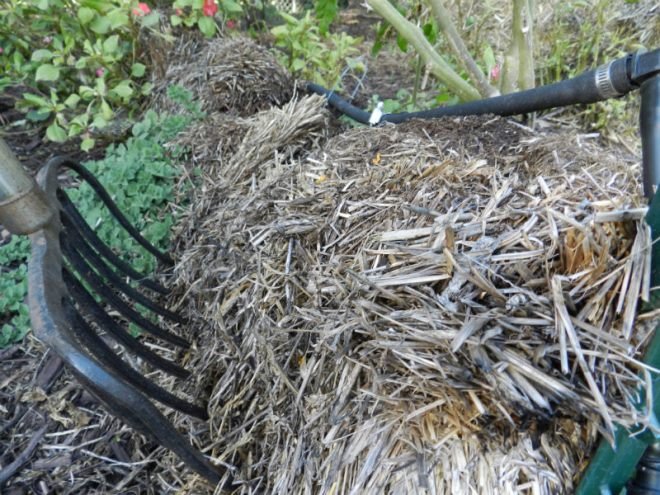
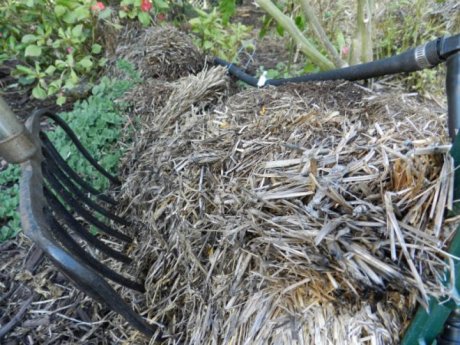
The advantage of straw beds is that they are given any shape, and bales can be laid on the driveways, near the outbuildings and other empty places. The main condition - the sun should fall on the straw at least 6-8 hours a day. Straw base is widely used in the north, where summer is shorter and colder. The fact is that such beds warm up faster than the ground, stimulating the beginning of plant growth.
Organization of a straw bed
When creating a garden of straw, you can face a number of difficulties, but they are all overcome, if you follow a few simple recommendations.
1. Find the "source" of good straw
Looking for quality straw can take time. It is better to purchase it directly from the procurer, in a local peasant or farm. After all, garden center vendors are not always aware of the conditions under which straw was grown. The ideal time to buy is autumn. When creating the necessary conditions, bales of straw are stored until spring, and then they can be "put into action" right away.
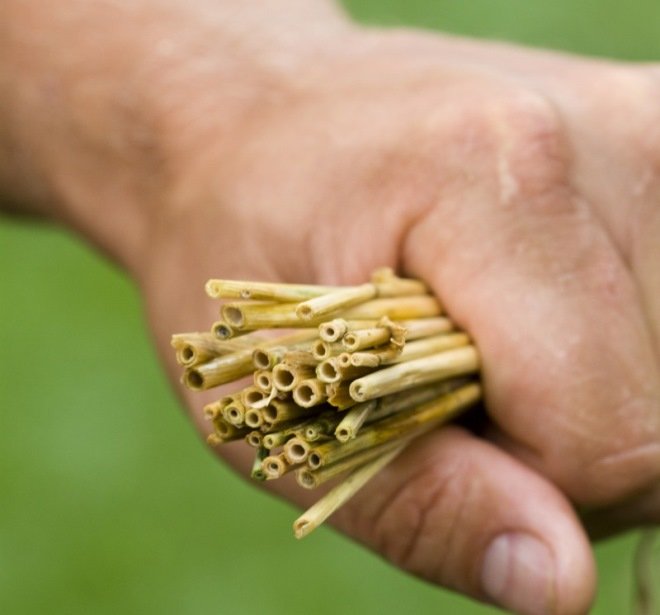
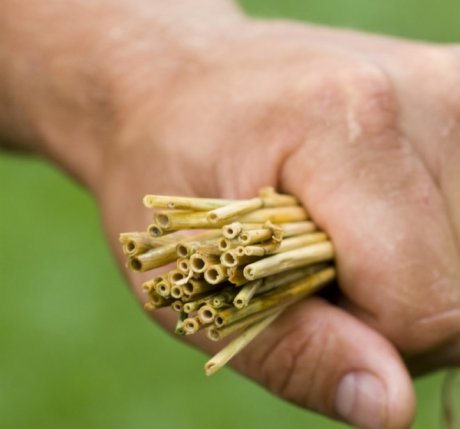
2. Choose a bale location
Choose a place on your site where there is enough sunlight. Lay a thick cloth to prevent germination through the straw of weeds. Put the bales on straw with a long, narrow side up. Do not remove the rope with which they are tied - it must keep the shape of the bales, including when the straw begins to overheat.
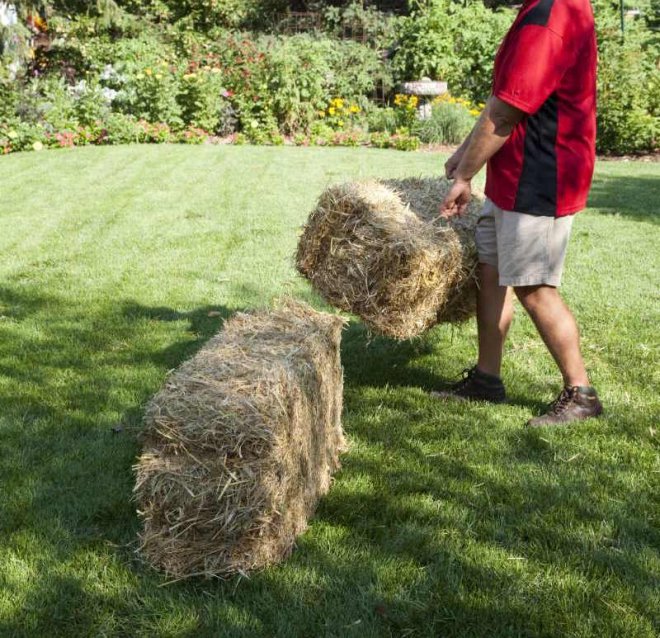
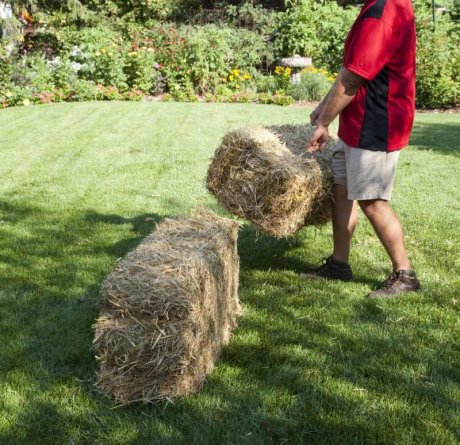
3. Prepare the straw for planting
Two weeks before the intended planting of plants, bales of straw should be prepared. They need to be slightly watered and fertilized. Approximately 10 days before planting, straw should be composted. At the beginning of the week, add 700 g of organic fertilizer to each bundle and pour abundantly so that the compost falls into the inner layers of straw. Then, closer to the weekend, wet the straw bales again liberally. From day 7 to day 9, add 300 g of organic fertilizer to each bale every day and do not forget about watering. On day 10, apply 500 g of phosphorus-potassium fertilizers (chopped fish bones mixed with wood ash in a 1: 1 ratio will do).


To understand that the "straw reactor" is working, stick your finger inside the bale. It should be hot and humid. The formation of small black “fungi” similar to clumps of chernozem should also begin. This means that the "substrate" is ready for use, and germinating fungi will accompany your plants during the entire growing season. They do not harm plants, and for you they will serve as an indicator that the straw decomposes and feeds the crops planted in it.
4. Lanes and greenhouse - two in one
One of the best properties of straw beds is that they combine vertical gardening with greenhouse "bias". Install two-meter supports at the end of each straw ridge and stretch a few rows of wire between them at a height of 20-25 cm from each other and from the base. As soon as the seeds give the first shoots, the lower wire can be used as the basis for laying polyethylene. Pulling it like a tent, you will become the owner of an improvised greenhouse in case of cold nights. In the future, as you grow, you can tie cucumbers, zucchini, tomatoes and other vegetables to the trellis.
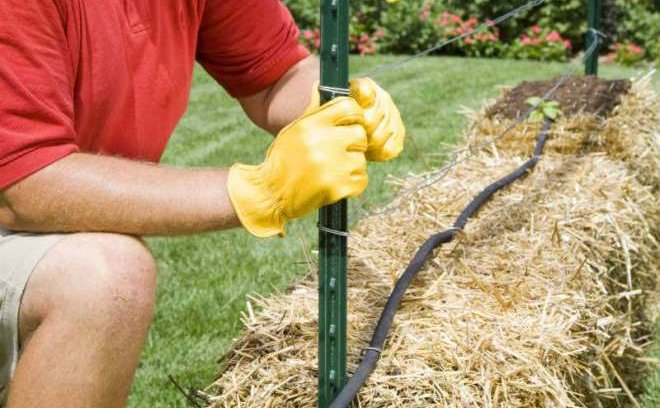

5. Landing time
If you planted seedlings in straw, use a spatula to slightly push it apart and make a cozy hole for the plant. Pour some decontaminated soil mixture into the hole so that it covers the roots of the plant. If you plan to plant seeds, pour a 5-7 cm layer of soil into each well. At first, young plants will develop in the ground, and as they grow, they will go deeper into the straw base.
Over time, any, even the most fertile soils, lose their qualities, and in order to replenish them with the necessary growth of crops with minerals and nutrients, periodically various types of fertilizer are applied. They can be artificial or natural.
Innovative technologies: organic top dressing of the soil
Artificial compounds are chemical compounds that can affect the biological purity of the resulting product. That is why more and more often on farms and farms use natural fertilizers. These include: manure, compost, silage, stalks of cereals and legumes, ashes, etc. Each of them has its own advantages regarding the composition of minerals and other useful elements, as well as in terms of ease of incorporation into the soil and accessibility. Straw fertilizer has been used for several decades. And for this there is every reason, which are indisputable advantages.
What are the useful elements of straw
Straw when released into the soil in the amount of 5–6 tons enriches it with the following microelements: nitrogen about 30 kg, phosphorus about 6 kg, potassium about 80 kg, calcium about 15 kg, magnesium about 5 kg. However, in order for these elements to fill the ground, after its plowing, at least 8 months must pass before planting a new crop.
When this natural biological material is decomposed, so-called humus is formed. It is he who forms the valuable properties of the soil and its agronomic indicators. To speed up the process of its decomposition, mineral nitrogen is additionally added. Neglect of such an important detail can lead to a sharp decrease in yield.
Straw is a rich source of carbon dioxide, which greatly affects the improvement of conditions for air nutrition of crops.
The straw used for fertilizer affects the land cover, loosening the soil during decomposition, which makes it softer and more pleasant for crop growth. Improving the structure of the soil, this beautiful natural material protects it from the formation of erosion, and also stimulates the energy processes in it. When it is plowed into the ground, the processes of water formation and air exchange are improved, and the absorbing capacity of the fertile land layer also increases. Adding straw reduces weeds. Especially this method is widely distributed among summer residents.
How to improve the yield?We are constantly being written letters in which gardeners' lovers worry that because of the cold summer this year there is a poor harvest of potatoes, tomatoes, cucumbers, and other vegetables. Last year, we published TIPS, on this issue. But unfortunately many did not listen, but some still applied. Here is a report from our readers, we want to advise plant growth biostimulants, which will help increase the yield up to 50-70%.
Read ...
What straw is suitable for fertilizer
Straw varieties of cereals or legumes are suitable for soil fertilization. It is a dried-up stalk of a plant, with a brittle tubular structure, and should also have extremely yellowish and brownish tones without green inclusions and obvious fungal or mold growths.

The most preferred straw for fertilizer legumes. It decomposes faster, contains less pathogens and pests that can adversely affect the quality of the soil and the planned crop.
How to put straw in the ground
In order for natural material introduced into the earth to maximize its fertile ability, it must be properly plowed into it. The first thing to do is prepare the straw directly, that is, grind it as much as possible. First make mineral nitrogen. After this, the straw is not spread around the required area. Then the land is plowed with a special combine in such a way that the applied mass with mineral nitrogen is under the ground at least 7 cm.
The effectiveness of straw as fertile substances, nutritious vitamins and minerals depends on these three main processes. It is usually introduced into the ground cover in the autumn, however, with early termination it can be done in the spring. This natural material is used with a lack of manure, but it is necessary to take into account the fact that it will be equivalent to manure as a fertilizer only with the additional use of mineral nitrogen.
This type of land enrichment is used for the following crops: fodder, tilled crops, leguminous plants, cereals, fodder corn. If straw is introduced into the ground immediately after harvesting, it can be left on the soil surface for up to two weeks without deterioration of the quality characteristics in order to prevent overdrying of the soil, however, in this case mineral nitrogen is added before plowing it into the ground.
After plowing straw into the ground to a depth of 7 cm, some time should pass, then repeated plowing is carried out in the autumn manner so that it is at a normal depth. If you plow it deep at once, it will decompose for a very long time and will not have the expected effect on the fertile layer of the earth.
In the case of non-observance of quantitative measures, as well as the use of additional fertilizers for self-decomposition, straw throws into the ground enough harmful acids (vanillin, cumaric, oxalic, butyric, etc.) that inhibit the growth of the roots of the cultivated crops.
How to make fertilizer from straw
Straw as a fertilizer can be used and not only in its pure form. It can be pre-composted with the addition of plant residues and mineral compounds that will accelerate its mineralization, decomposition, and stimulate the flow of microbiological processes.
In the pre-prepared compost pit lay in layers: 100 kg of chopped straw, 15 kg of mowed grass or weeds. All this is filled with a special solution: 3 kg of superphosphate, 2 kg of ammonium nitrate, 3 kg of potassium chloride are used for 20 liters of water. Pledged pit is left in a calm state for one year. Before using the contents of the pit is mixed.
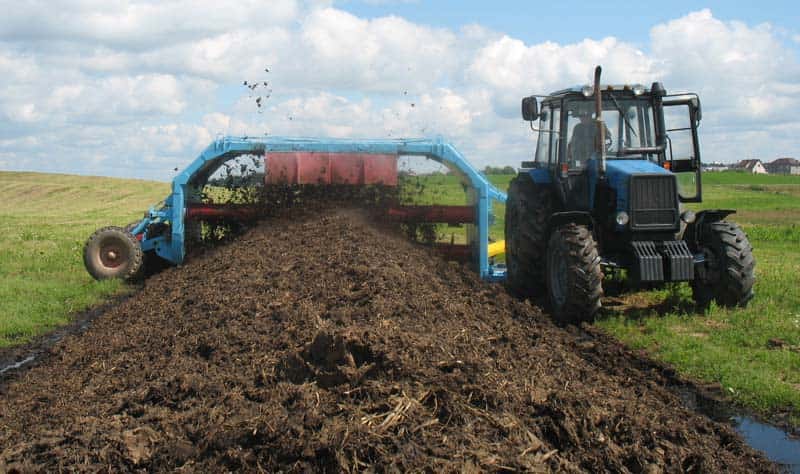
Pros and cons of using straw as a fertilizer
Benefits:
- availability and low cost of the materials used;
- less time and power to cover the ground with straw than, for example, with manure;
- the fertilization process is thus simpler, cleaner, more pleasant and safer than with manure or chemical materials and substances;
- minimum loss of useful substances from the material used when it is introduced, which is ensured due to the low rate of its decomposition;
- when properly introduced into the ground with the observance of time and the use of additional elements, straw is almost 3 times higher than manure in organic content; thanks to this: the moisture permeability of the earth and water-holding capacity are increased, the physical characteristics of the earth (friability) are increased;
- after the work, the land is preparing to plant the planned crops in accordance with existing technologies;
- straw improves not only the biological activity of the earth, but also enzymatic; when it decomposes in the soil, it enriches the earth with carbon, which stimulates not only enhanced growth of the root system, but also the green mass of plants;
- it also performs a protective role, protecting the earth from the formation of erosion, mold growth and drying.
Disadvantages:
- when introducing poor-quality straw varieties of cereal into the soil can penetrate pests and pathogens on it;
- in order to achieve the expected effect in terms of increasing the fertility of the land, it is necessary to additionally use mineral nitrogen, as well as straw of various varieties of cereals, legumes, rice;
- the need for repeated plowing to accelerate the decomposition of straw;
- the need to moisten the land in the case of the dry season, since without sufficient water, the decomposition of the material used will be extremely slow.
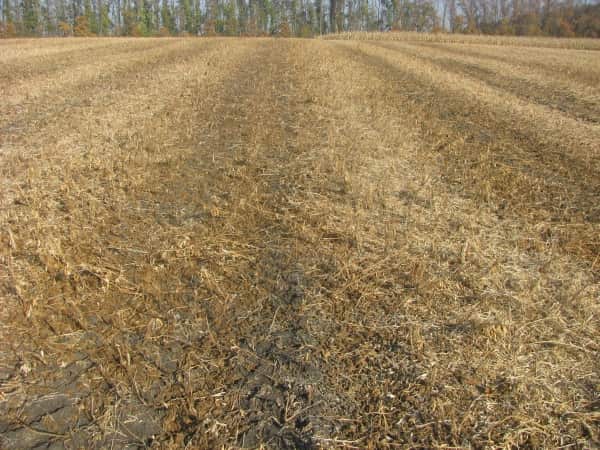
In order to achieve the maximum effect from the enrichment of the soil with straw, it is necessary to use it in moderation and precisely follow the established sequence for introducing straw and mineral nitrogen.
The use of straw as a fertilizer will be relevant at all times, and further study and analysis of its effect on soil cover in combination with additional elements and substances will have promising consequences.
And a little about the secrets of the author
Have you ever experienced unbearable joint pain? And you know firsthand what it is:
- inability to move easily and comfortably;
- discomfort when climbing and descending stairs;
- unpleasant crunching, clicking not at will;
- pain during or after exercise;
- inflammation of the joints and swelling;
- unreasonable and sometimes intolerable aching pain in the joints ...
And now answer the question: does it suit you? Is it possible to endure such pain? And how much money have you already “leaked” to ineffective treatment? That's right - it's time to stop with this! Do you agree? That is why we decided to publish an exclusive interview with Oleg Gazmanov, in which he revealed the secrets of getting rid of joint pain, arthritis and arthrosis.
Attention, only TODAY!
Can straw be used as a fertilizer! It turns out it can! Straw can be embedded in the soil instead of fertilizer. Because it contains carbon from which humus is formed. Straw is also a source of carbon dioxide, which improves the conditions for air nutrition of plants.
It is best to add straw to the soil in the fall, but you can use it in the spring with early planting. The substances present in the straw will become available for plant nutrition only after complete mineralization. It is established that this process in plant residues and, in particular, in the straw, is activated when the ratio of carbon and nitrogen is more than 25: 1. The microorganisms that carry out mineralization, absorb mineral soil for their vital activity. Part of it is fixed by these microorganisms, which leads to a decrease in this nutrient in the soil - and the plants experience nitrogen starvation. Therefore, when incorporated into the soil, it is recommended to add 8–12 kg of superphosphate and ammonium nitrate per ton of straw, or 8–12 g per 1 kg. In addition, it has been experimentally established that deep embedding of straw leads to the fact that the mineralization process takes place in the absence of air. As a result, toxic products are released that cause a decrease in yield.
The maximum rate of decomposition of straw is noted by the 90th day of its mineralization, and it is significantly higher at a depth of 10-12 cm. In industrial conditions, it is buried with discs, and after 2-3 weeks with a plow. The application of mineral fertilizers increases the rate of decomposition by 10-15%.
Straw can serve as a good mulch material that retains moisture in the soil and saves you from tedious weed control.
The fertilizer value of straw is greatly enhanced by pre-composting. To do this, use the usual. Besides straw, the main components are plant residues, which stimulate microbiological processes and accelerate its mineralization. About 100 kg of green mass (mowed grass, weeds) is enough for 100 kg of straw. Before laying in the straw must be moistened with a solution of mineral fertilizers. In 20 liters of water dissolve 2 kg of ammonium nitrate, 3 kg of potassium chloride and superphosphate and spend on 100 kg of straw.
With such components, the compost heap is quite complete without mixing. They are laid in alternating layers. With regular moisture in a year you will get a beautiful one, containing all the necessary elements for the growth and development of plants.

